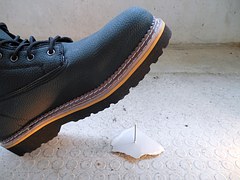Does it Matter if They Fixed the Problem After I got Injured?
This article addresses an evidentiary principle familiar to seasoned personal injury lawyers in Baltimore, As Attorney Eric T. Kirk will tell you.
When repairs are made to a defective condition that has caused an injury, that fact typically never comes out at trial.

Maryland law provides that “subsequent remedial measures” are not relevant [and therefore not admissible] to prove fault or liability. There are exceptions to this rule; evidence of subsequent repairs is admissible to show the defendant had notice; or control of the instrumentality; or to show what the applicable standard of care owed to the plaintiff [e.g. were reasonable precautions, later taken, something that reasonably should have been in place prior to the accident]. It seems like common sense that if someone wiped up a spill, or repaired a stair or railing, right after an individual was hurt, that should be evidence there was a problem. The law does not recognize this, and is perhaps counter-intuitive here. The opposite in fact is true. Evidence of a repair, offered to show there was a problem, is inadmissible. Some commentators have suggested the rationale is that allowing evidence of repair would discourage repair. The law of evidence is often complex. Premise liability cases are typically difficult to prove, and a crucial piece of evidence can often make a huge difference. Indeed, an inability to prove the owner had notice of dangerous condition in time to do anything about it is the downfall of many premises liability cases. If you have such a claim, I’d suggest you consult with an experienced attorney.



